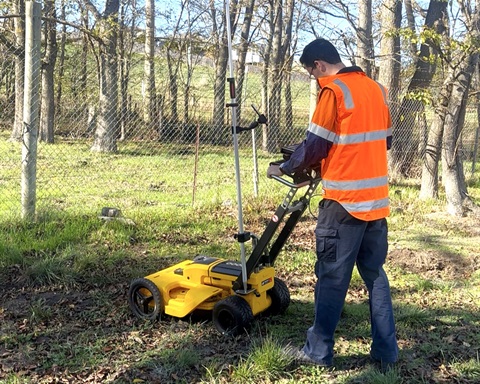Technology digs into Launceston history
Published on 15 May 2025

The City of Launceston is embracing cutting-edge technology to help unlock the secrets of one of the city’s oldest remaining buildings — the historic Braemar Cottage at Heritage Forest.
The Council will today undertake a non-invasive ground-penetrating radar survey at the cottage as part of ongoing investigative works to assess the site’s heritage value and inform its future use.
The radar survey, conducted by Southern Archaeology, will use electromagnetic pulses to scan beneath the surface of the site, potentially revealing the remains of former outbuildings or features long hidden from view.
This technique offers a non-destructive method of mapping subsurface features, giving Council planners and conservators valuable insight without excavation.
Originally constructed in the 1820s by Scottish settler John Lamont, Braemar Cottage stands as one of Launceston’s oldest buildings, and was part of a 112-acre land grant that now encompasses Churchill Park and Heritage Forest.
Lamont — remembered locally as 'Jock the Piper', was not only a prominent figure in early Launceston but also instrumental in developing the city’s first reticulated water supply system from the St Patrick’s River.
City of Launceston Mayor Matthew Garwood said the project represented an important intersection of heritage and innovation.
"Braemar Cottage is a unique window into our city’s colonial past, and we’re using modern tools to ensure we preserve and understand that history in the most respectful and informed way possible," Mayor Garwood said.
"This radar work has the potential to shed new light on how the property was used — from early farming infrastructure to possible convict-era buildings.
"It’s a fascinating step forward in what is shaping up to be an awesome conservation journey."
The GPR investigation follows earlier internal and minor excavation works that have helped expose original bluestone footings and improve drainage at the site.
A specialist conservator is also assisting with the preservation of artefacts already uncovered.
In 2024, the Council commenced a series of structural and historical investigations to guide potential future uses of the cottage, which sits today within the tranquil surrounds of Heritage Forest.
"The use of GPR is another step in our commitment to preserving Launceston’s history while preparing this space for meaningful community use in the future," Mayor Garwood said.